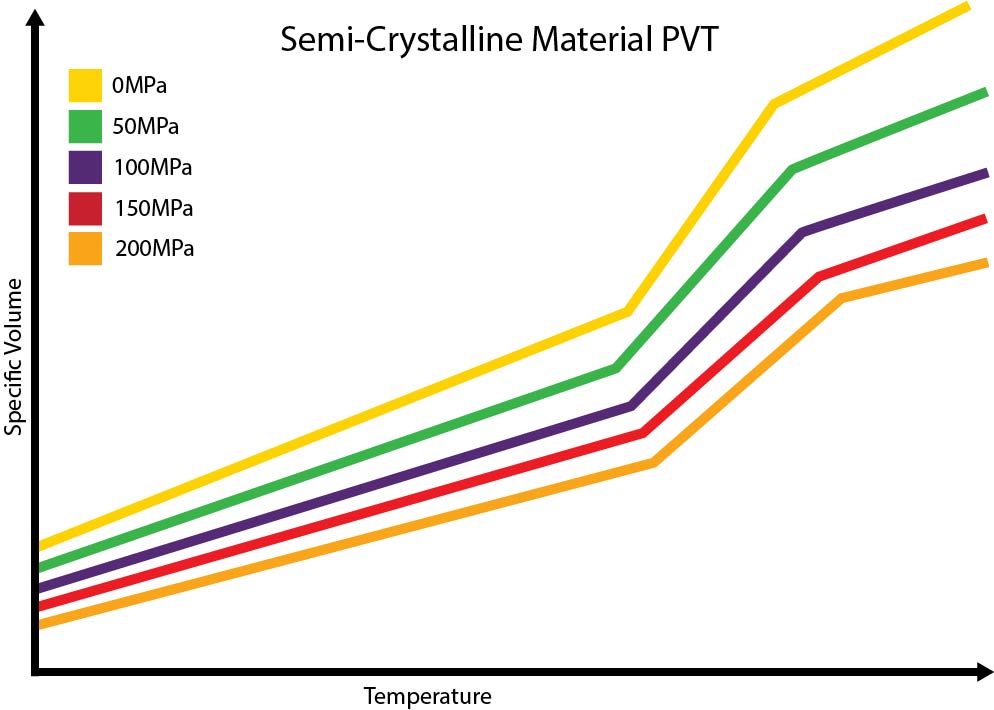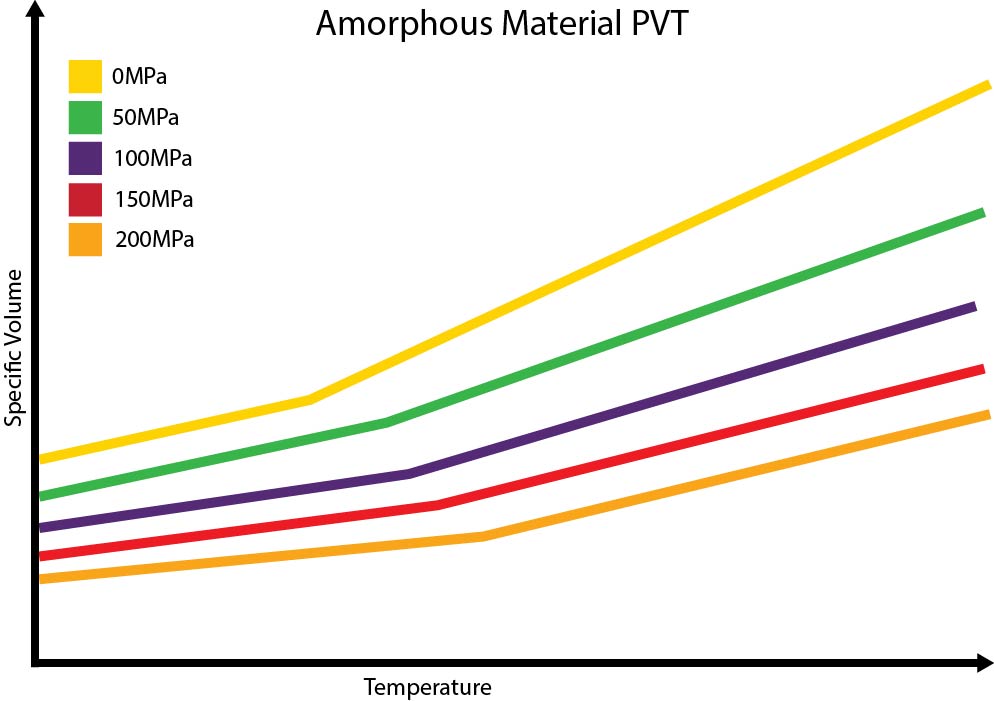The Pressure-Volume-Temperature (or PVT) relationship of different materials is a calculation of the compressibility of material during the packing and cooling phase. Since this affects a parts’ shrinkage and warpage after ejection, having a clear understanding of PVT is essential for success.
Polymer material shrinkage inside a mold must be compensated for with packing and holding pressure. The higher the packing pressure, the more material will be packed into the mold and the lower the volumetric shrinkage and specific volume.
Specific volume is the reciprocal of density so higher specific volume means lower density and vice versa.
Different types of thermoplastics have different PVT behaviors through their temperature ranges. These sample PVT volume to temperature graphs show that semi-crystalline thermoplastics have significant and abrupt volumetric changes while amorphous thermoplastics show a change in the degree of the slope.


PVT behavior is measured under slow cooling rates but the actual cooling rate of polymers inside a mold is much more rapid. So, while measuring PVT for amorphous materials is accurate because of their smooth packing and cooling behavior, measuring PVT behavior for semi-crystalline materials is much more difficult due to their rapidly changing behaviors.
PVT behavior in semi-crystalline materials has a steep transitional area from a liquid to a solid state, changing quickly in a narrow temperature range. Because of high cooling rates inside a mold, crystalline molecular micro-structure cannot fully develop, resulting in a complex shrinkage behavior inside the mold.
It is important to evaluate the cooling rate of a semi-crystalline material inside a mold. Since wall thickness and melt and mold temperature influence the cooling rate of materials inside the mold, these are important factors to consider as they will influence shrinkage.
Understanding this behavior may help part/mold designers and processors find the optimal combination for strong parts with dimensional stability and no long-term failures.

Preguntas, comentarios o retroalimentación...
Lo siento, debes estar conectado para publicar un comentario.